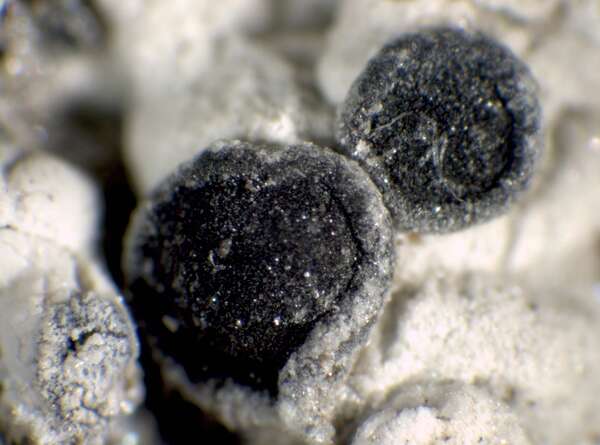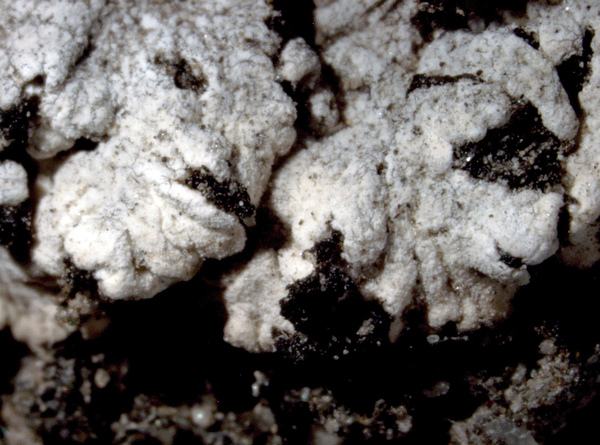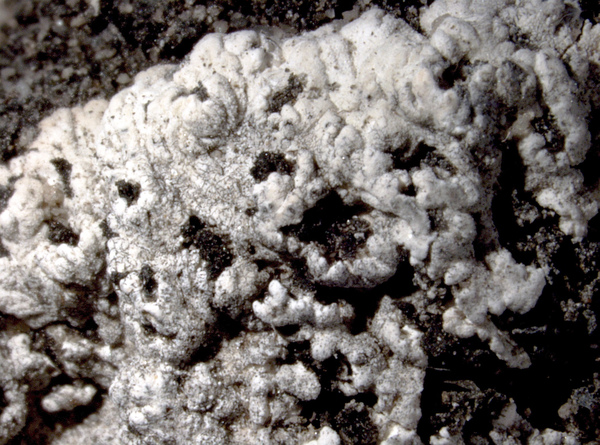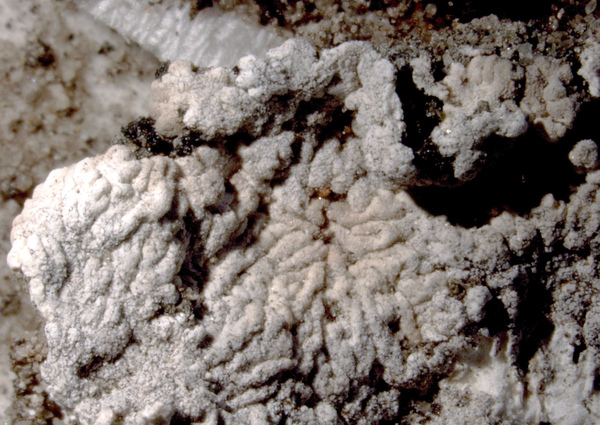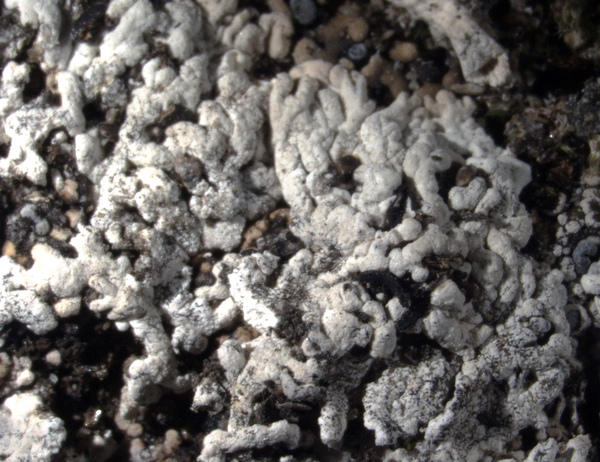Buellia elegans Poelt
in Poelt & Sulzer, Nova Hedwigia, 25: 184, 1974.
Synonyms: Buellia epigaea var. angusata (Müll. Arg.) Zahlbr.; Buellia epigaea var. effigurata (Schaer.) Zahlbr.; Buellia epigaea var. major (Müll. Arg.) Zahlbr.; Diploicia epigaea var. angustata Müll. Arg.; Diploicia epigaea var. effigurata (Schaer.) Körb.; Diploicia epigaea var. major Müll. Arg.; Lecidea epigaea var. effigurata Schaer.
Distribution: N - Lomb (Trinkaus & Mayrhofer 2000), Piem (Hafellner & al. 2004), VA (TSB 29482).
Description: Thallus crustose-placodioid, episubstratic, of radiating, white-pruinose, 1-2 cm long, 0.3-1.2 mm wide lobes, forming orbicular to irregular, up to 4 cm wide rosettes. Cortex c. 20 μm thick, filled with crystals; medulla white, I-; lower surface pale, attached with rhizohyphae. Apothecia not always present, lecideine, 0.6-1.8 mm across, at first immersed but soon becoming adnate, with a black, flat to slightly convex, soon epruinose disc, and a thin, black, often pruinose, persistent proper margin; a pseudothalline margin is sometimes present at the base of the proper margin. Proper exciple dark red-brown in outer part, paler within; hymenium colourless, not inspersed with oil droplets, 70-150 μm high, I+ blue; paraphyses 1-1.5 μm thick at mid-level, the apical cells 4-5 μm wide, with a brown cap; hypothecium black-brown to black-grey. Asci 8-spored, clavate to cylindrical-clavate, the apical dome K/I+ dark blue with a pale, conical-pointed apical cushion (axial mass), the wall I-, but the thin outer gel I+ blue, Bacidia-type. Ascospores 1-septate, slightly constricted at septa, brown, oblong-ellipsoid, 12-22 x 5.5-10.5 μm, with a thin, minutely warted wall. Pycnidia black. conidia bacilliform, 5-8 x 1-1.5 μm. Photobiont chlorococcoid. Spot tests: cortex K+ yellow (reaction sometimes faint), C-, KC-, P-; medulla K-, P-, or K+ red, P+ orange-red in spots. Chemistry: cortex with atranorin; medulla sometimes with norstictic and stictic acids.Note: a widespread steppe-species found on soil deriving from calciferous schists in open grasslands, restricted to dry-warm sites in the Alps.
Growth form: Crustose placodiomorph
Substrata: soil, terricolous mosses, and plant debris
Photobiont: green algae other than Trentepohlia
Reproductive strategy: mainly sexual
Subcontinental: restricted to areas with a dry-subcontinental climate (e.g. dry Alpine valleys, parts of Mediterranean Italy)
Commonnes-rarity: (info)
Alpine belt: extremely rare
Subalpine belt: very rare
Oromediterranean belt: absent
Montane belt: extremely rare
Submediterranean belt: absent
Padanian area: absent
Humid submediterranean belt: absent
Humid mediterranean belt: absent
Dry mediterranean belt: absent

Predictive model
Herbarium samples
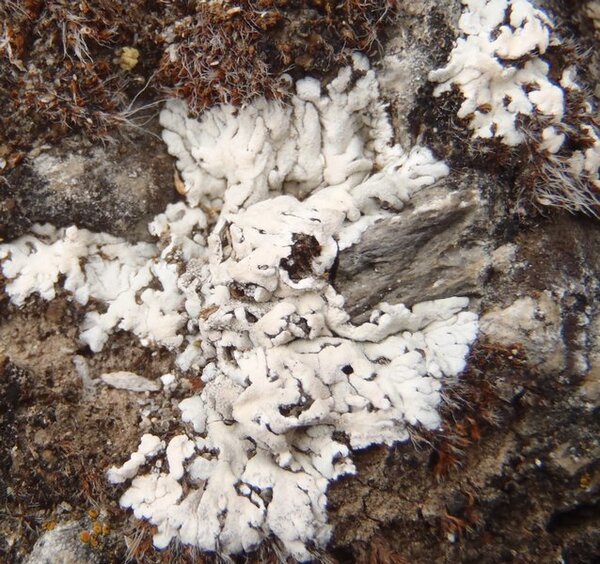

Curtis Randall Björk – CC BY-SA 4.0
Washington, Asotin County, Hells Canyon, Lime HillLimestone cliffs in canyon grassland 2013-05-06
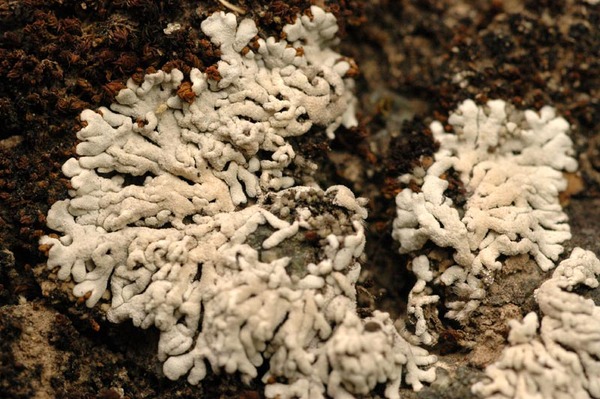
Einar Timdal - Source: http://www.nhm2.uio.no/botanisk/lav/Photo_Gallery/Buellia/elegans_G=Peru+Lima_C=ET_H=O-L144848_I=DSC_8243.jpg
Growth form: Crustose placodiomorph
Substrata: soil, terricolous mosses, and plant debris
Photobiont: green algae other than Trentepohlia
Reproductive strategy: mainly sexual
Subcontinental: restricted to areas with a dry-subcontinental climate (e.g. dry Alpine valleys, parts of Mediterranean Italy)
Commonnes-rarity: (info)
Alpine belt: extremely rare
Subalpine belt: very rare
Oromediterranean belt: absent
Montane belt: extremely rare
Submediterranean belt: absent
Padanian area: absent
Humid submediterranean belt: absent
Humid mediterranean belt: absent
Dry mediterranean belt: absent

Predictive model
| Herbarium samples |


Curtis Randall Björk – CC BY-SA 4.0
Washington, Asotin County, Hells Canyon, Lime HillLimestone cliffs in canyon grassland 2013-05-06

 Index Fungorum
Index Fungorum
 GBIF
GBIF

